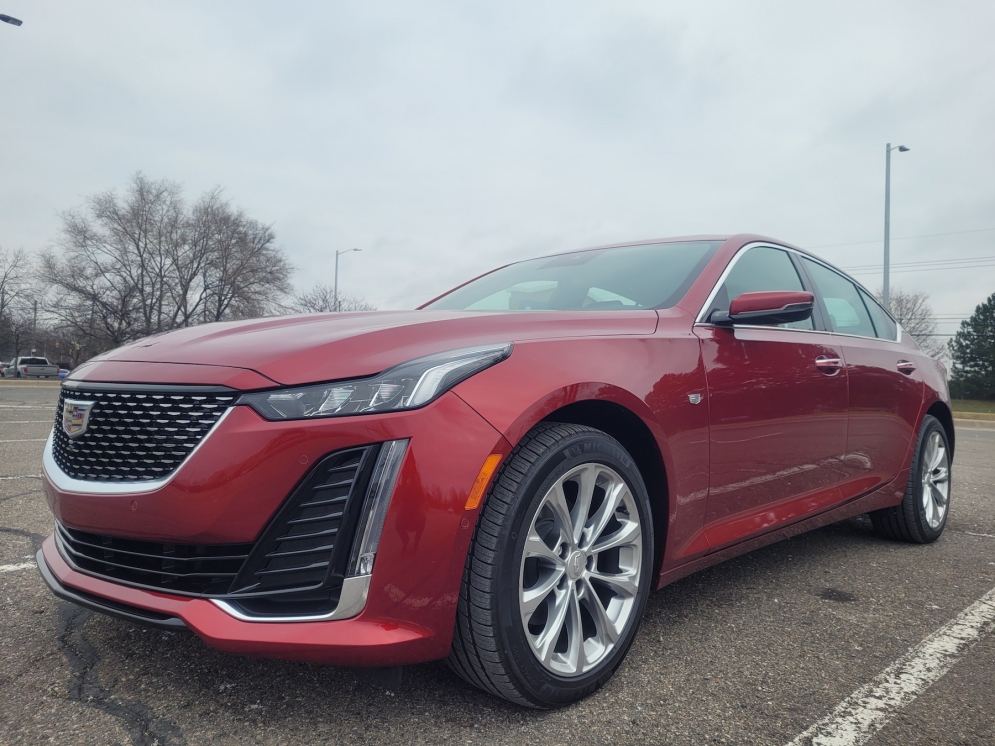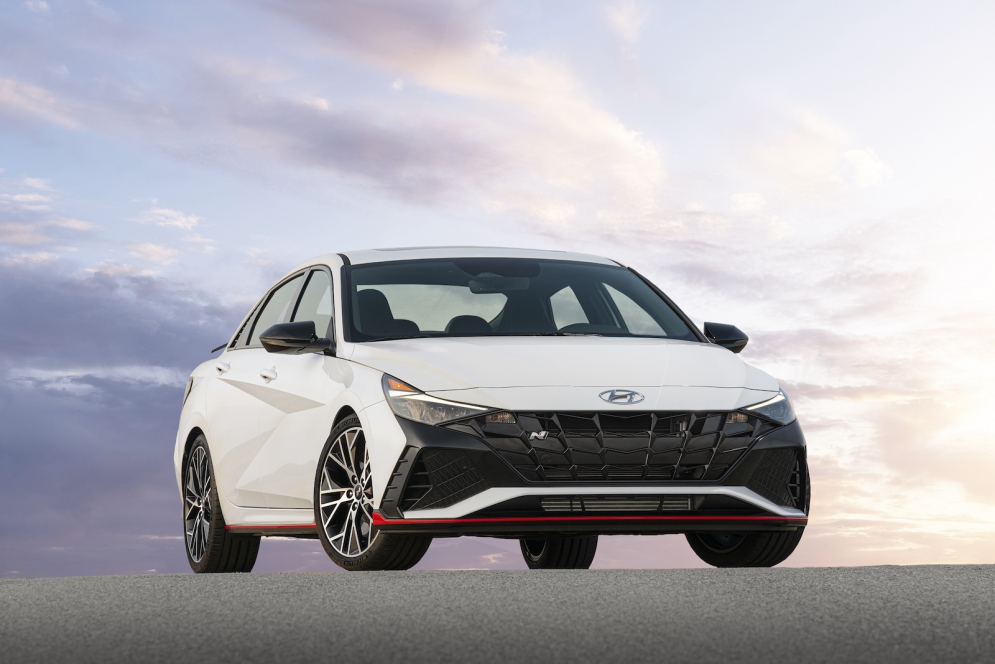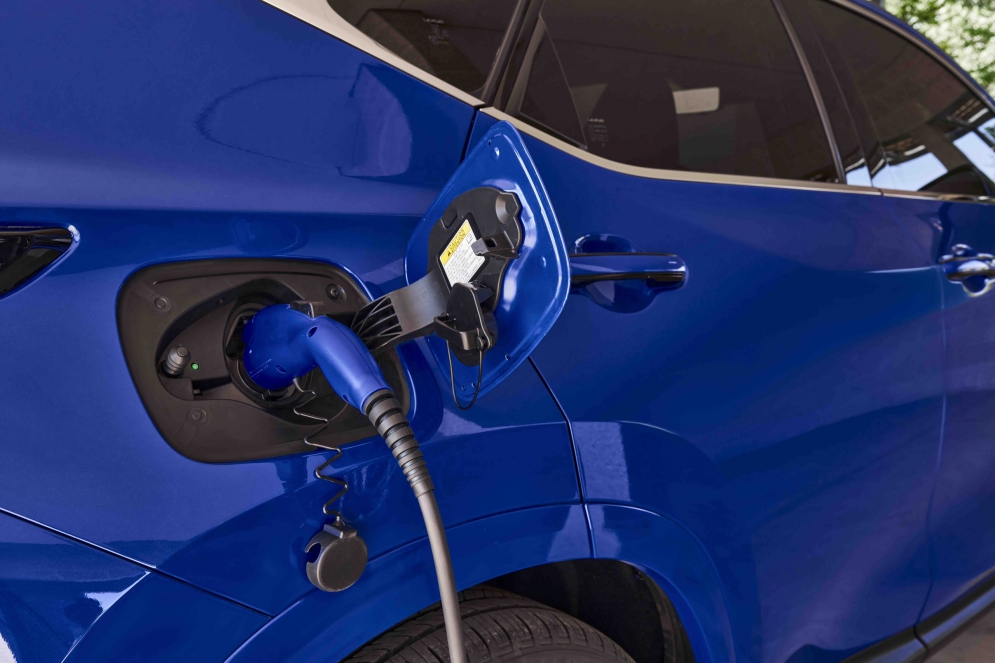Back in the day, owning a luxury sedan was the ultimate goal of many up-and-coming car buyers looking to impress. But goals have changed with the SUV revolution of recent years.
If we’re talking about endangered species among U.S. automakers, the sedan would definitely be near the top of that list. One by one, sedan models are being dropped from lineups in favor of crossovers and SUVs, leaving precious few remaining. And the vast majority of sedans sold today will come from Asian and European automakers.
Cadillac, however, is not throwing in the towel, and continues to put out its CT4 and CT5 sedan models.
I recently was able to test out a 2023 Cadillac CT5, a midsize offering that’s the larger of Cadillac’s two sedan options.
Packed with groundbreaking technology, fun driving characteristics, and a sharp design, it’s understandable why Cadillac is sticking around in this segment, as the CT5 has a lot to offer buyers to woo them away from foreign luxury makes.
As the appetite for large luxury vehicles continues to grow and options increase, competition has never been tougher.
One contender in this category that’s been around for many years is the Infiniti QX80, the flagship body-on-frame, V8-powered SUV from the luxury marque.
Ahead of an anticipated full redesign for 2024, I recently was able to test the 2023 Infiniti QX80, a truly classy ride which still manages to impress despite its longevity — even when it battles in a class that includes tough competitors such as the BMW X7, Cadillac Escalade, Audi Q8, Jeep Grand Wagoneer and more.
Read on for a full breakdown of the QX80’s design, drive quality, tech and more.
Additional Info
- Vehicle 2023 Infiniti QX80
- Price as tested $90,855 (starts around $75K)
- Best feature Roomy and versatile interior, impressive tech features, powerful V8 engine
- Rating 4 out of five stars
- Who will want this vehicle? Large families seeking a high-end, roomy ride that will meet all their needs
Some car models have many sides to their personality, catering to a variety of tastes. For example, alongside the more tame versions of Hyundai’s compact Elantra sedan, there’s a star that’s ready for its spotlight.
I’m referring to the Hyundai Elantra N, the performance-oriented ride that’s truly the gem of this lineup in terms of driving performance and overall design.
The Elantra N was introduced as a new model for 2022, and has carried over with little change for the 2023 model year. The N is for those driving enthusiasts who want some oomph under the hood and a vehicle built to tackle the open road (or a racetrack) with complete confidence. The powerful N brand is just one method Hyundai is using to grow its audience beyond those who want your typical day-to-day car or SUV options.
The Elantra N competes directly with sporty compact cars from brands including Honda, Volkswagen, Subaru and Toyota.
I recently spent some time behind the wheel of an Elantra N, and I’m back with a full report on this highly customizable hot rod.
Additional Info
- Vehicle Hyundai Elantra N
- Price as tested $35,145
- Best feature Customizable and truly fun driving experience
- Rating 4.5 out of five stars
- Who will want this vehicle? Driving enthusiasts looking for a versatile hot rod that won’t break the bank
Media
Mazda has always aimed higher than its status.
While not officially a competitor in the luxury class, it has long designed its vehicles to look and perform at a level that will make people think of Mazda as a luxury-level purchase, even if the price is lower.
That applies to their smallest vehicles too, including the 2023 Mazda3, which is available as both a sedan and a hatchback.
There have been some updates to the engine lineup for 2023 to further improve drive quality, more tech features are standard, and there is an attractive new trim level offered called Carbon Edition — which I was recently able to test.
When you’re going against major players like the Honda Civic, Volkswagen Jetta, Hyundai Elantra, Kia Forte, Nissan Sentra and more, you have to come strong.
And to put it simply, Mazda’s compact sedan and hatchback options continue to deliver performance over and above their competition, while also maintaining a distinct looks advantage.
Additional Info
- Vehicle 2023 Mazda3
- Price as tested $31,115 (starts around $24K)
- Best feature Sporty ride, upscale styling
- Rating 4.5 out of five stars
- Who will want this vehicle? Compact car buyers looking for the most enjoyable ride in the class
Lexus is a luxury brand that has long been a supporter of hybrid vehicles, and it recently unveiled its first fully electric vehicle, the RZ 450e.
In the middle of that spectrum of differently powered vehicles is the plug-in hybrid, which embraces a partial EV operation combined with a hybrid setup. Lexus is also pursuing this category, with their first-ever offering being the 2022 Lexus NX 450h+, a plug-in hybrid version of their popular compact SUV.
The 450h+ is part of the second generation of the NX line, which also includes ICE and standard hybrid versions. Plug-in hybrids can help ease worries about range anxiety among buyers, while also allowing them to begin their journey toward fully embracing a true EV.
The luxury battlefield is always intense, and that applies to the electrified/hybrid realm too. So Lexus knows it has to come strong to compete in this sector — where it’s battling brands like Audi, Volvo, Mercedes-Benz and more.
I recently spent time in a 2022 NX 450h+ F Sport, and I’m back with a full report on the vehicle, which shares some technology with the nonluxury Toyota RAV4 Prime plug-in hybrid.
Additional Info
- Vehicle 2022 Lexus NX 450h+ F Sport
- Price as tested $63,530 (Starts around $58K)
- Best feature Fuel economy, design, technology
- Rating 4 out of five stars
- Who will want this vehicle? Luxury SUV buyers seeking solid EV range from a plug-in hybrid, and a classy and high-tech ride

AutoTechReviews is your home for In-depth reviews of the latest cars, trucks, and SUVs; information on all the emerging vehicle technology; and breaking news from the world of NASCAR and other motorsports.





